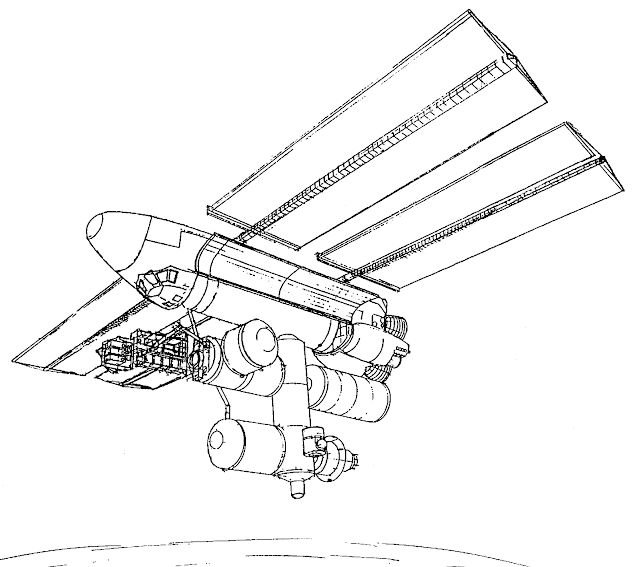
David Portree’s No Shortage of Dreams Web site has a fascinating article on “The 1991 Plan to Turn Space Shuttle Columbia Into a Low-Cost Space Station”. During the chaotic process of deciding what kind of space station NASA could get funded by Congress and built using the Space Shuttle, many alternatives were proposed. One of the more intriguing came from outside NASA. Space Engineering Incorporated (SII), whose technical adviser was legendary spacecraft designer Maxime Faget (who was born in Belize), proposed an Orbiter Derived Station (ODS), which would use a “stripped” Space Shuttle orbiter with wings, tail, landing gear, and thermal protection removed, and with a space station core module permanently mounted in its payload bay as the hub of a space station. The shuttle’s propulsion would put it in orbit, and its maneuvering engines and reaction control thrusters would allow re-boost and attitude control.
The core shuttle would launch unmanned in 1996, deploy solar panels from enclosures on its sides, and then be visited by manned Shuttle missions that would deliver habitat, laboratory, and experiment modules. In 1997, an Assured Crew Return Vehicle would be delivered by a Shuttle and docked to the station, allowing it to be permanently manned when the Shuttle was not present. Subsequent flights would deliver European and Japanese experiment modules, with the station fully operational years before NASA’s space station Freedom design envisioned.
This course was not, of course, pursued. The International Space Station, which succeeded the Freedom design, took dozens of Space Shuttle missions to assemble and was not considered fully assembled until shortly before the Shuttle’s retirement in 2011.